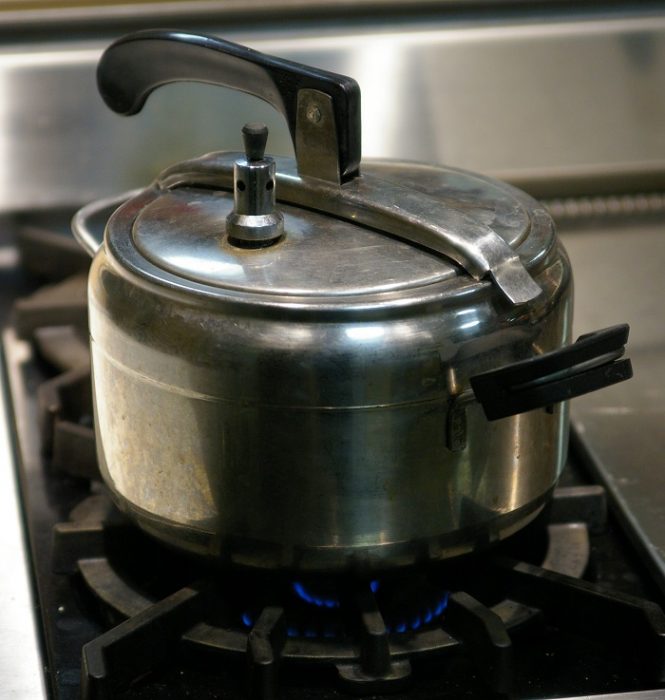
Nowadays there are a lot of kitchen devises and appliances which are able are able to greatly simplify our lives. One of them is the pressure cooker – a great helper in the kitchen. Almost every housewife can say for sure that pressure cooker makes the process of cooking much easier. It turns out that the pressure cooker can be used not only for cooking, but also for sterilization of cans and jars. Thanks to the pressure cooker sterilization takes place very quickly and reliably.

When applying sterilization it is necessary to strictly observe the requirements of the instructions for use of the pressure cooker and the requirements of the conservation. You can’t and use the pressure cooker unless you’ve added enough water. The boiling time depends on the ingredients, volume of cans and the type of preservation. As the pressure cooker is turned on, heat produces steam which cooks food faster by raising the boiling point. Pressure Cooker allows you to heat the water (and water vapor, respectively) to the temperature required for sterilization. This is achieved by increasing the pressure inside. For this purpose, a special valve is used.
For a correct sterilization, the pressure within the cooker must be at 15 psi for a certain period. This means it must be about 121 °C within the cooker. When you have to sterilize something for a certain period countdown starts from this moment, not from the moment you have put the pressure cooker on the gas stove When the pressure cooker is turned on, heat produces steam which cooks food faster by raising the boiling point Some pressure cookers have a pressure meter and sometimes even a temperature meter which makes it easy to get the right pressure. If the heat supply is not reduced the pressure may continue to rise and the dead weight or safety valve opens (blows a whistle), releasing steam and preventing the pressure from rising any further.
Whenever the pressure in the pressure cooker gets high enough to leak, it is hot enough, and maintain just a tiny amount of steam coming out of your pressure check valve. You don’t need to have it going full blast and blowing steam out. The safety valve is provided to prevent possible rupture of the cooker itself. It is not an indicator of cooking time. You should place a rack on the bottom of the pressure cooker before putting the jars or other articles. There must always be some water in the pressure cooker before you start sterilization. You should pour at least 2 cups of water when you are cooking for 10 minutes or more. This is because the steam escapes the pressure cooker and there should be enough water in the pressure cooker to generate steam for the desired length of time. The cooker should never be more than ⅔ full of water as there must be room for the steam to accumulate.

You should not leave the pressure cooker unattended. After the 15 minute sterilization time is up you should allow the pressure cooker to release the pressure slowly. Let the pressure cooker sit off the burner on the stovetop for an hour and a half to let it come back to room temperature as slowly as possible so as to not have a problem with the glass mason jar. Never force the lid open, modern cookers have a safety feature which stops you opening the lid, don’t try to get the pot open or you may get burnt.
If you’re in a hurry, run the cooker under the cold tap, until the pressure indicator drops and the lid comes off easily. To be sure that the pressure cooker is working properly you should test it after 10 hours of use. It’s important to keep your pressure cooker clean and in good working order.